Vintage maximalism: ‘I call it chic granny’
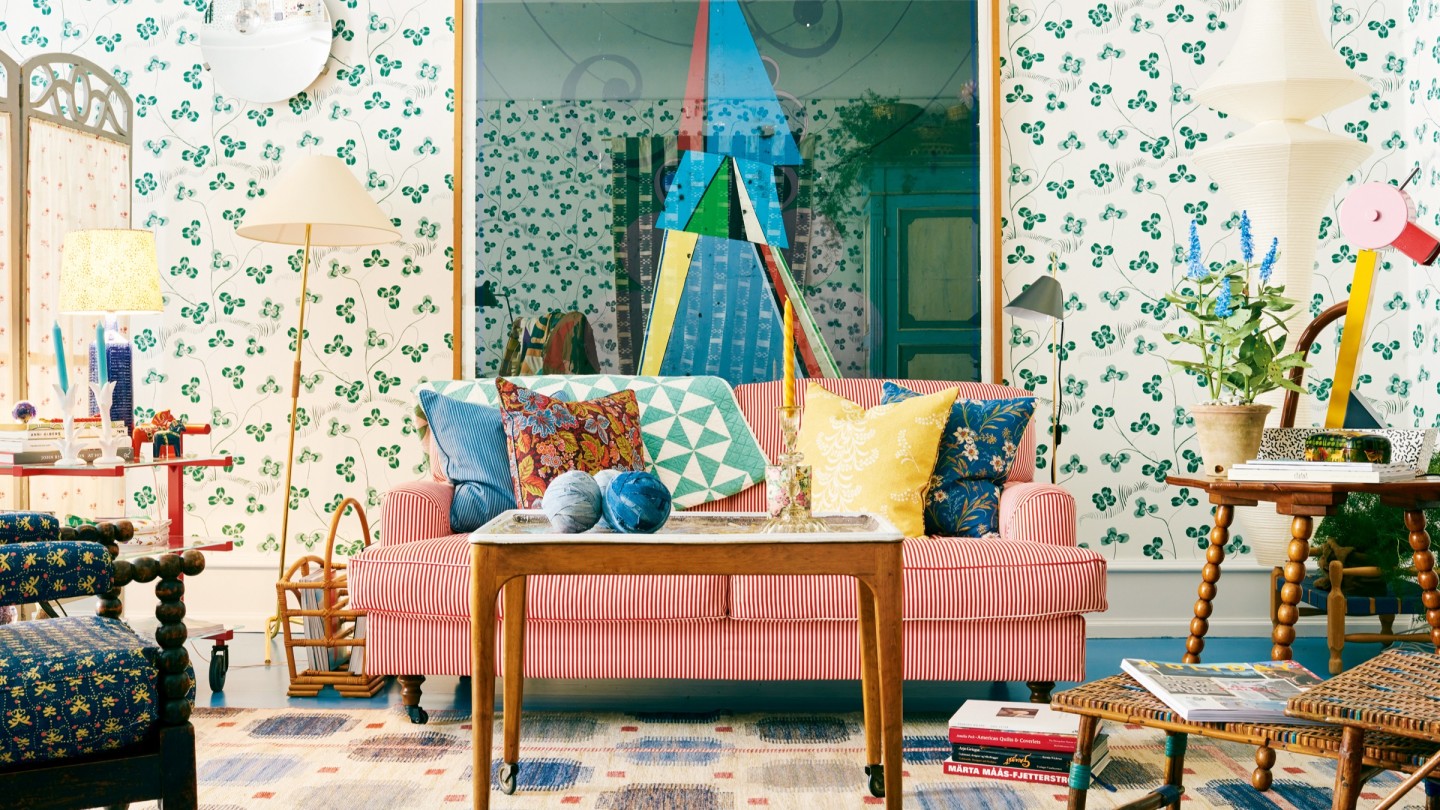
Roula Khalaf, Editor of the FT, selects her favourite stories in this weekly newsletter.
“For a lot of people this would be way too much,” says interior designer Cath Beckett of her two-bedroom flat in west London. “My mum, for example, thinks the dining room is hideous.”
Beckett is one half of the interior design studio Yellow London, founded with her partner Liv Wallers in 2017. Its modern traditional designs are full of bright colour and pattern, both of which feature large in Beckett’s flat; a small space furnished with antique furniture, heirlooms and flea-market finds, all delivered with polish and wit.
This perhaps comes through most in the dining room, which is covered (walls and ceiling!) in the jaunty southern French style of Pierre Frey’s Plein Eté design. Pink blinds hang at the window and a vintage dining table from Newark Antiques Fair, painted orange, is paired with a paint-chipped blue bench. A drying rack hanging overhead for laundry is a practical use of space; the overall effect is that of sitting on a Mediterranean terrace next to a bustling marketplace some time in the 1950s. “It’s so great when you’re in here at night with dimmed lights. It feels all-encompassing – like you’re in a room in a restaurant.”
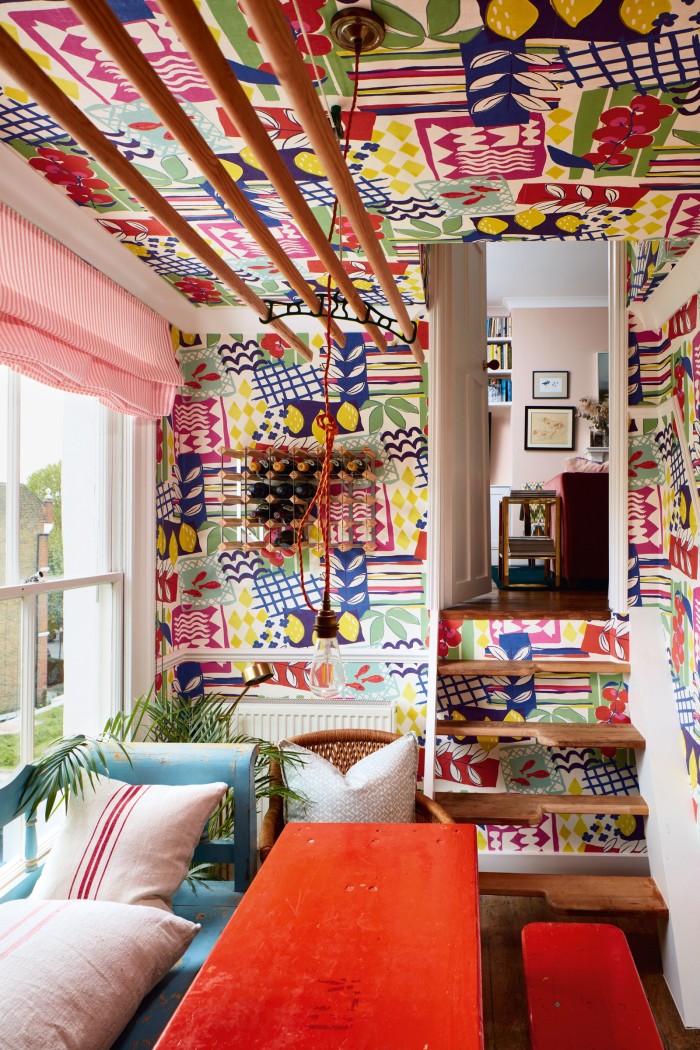
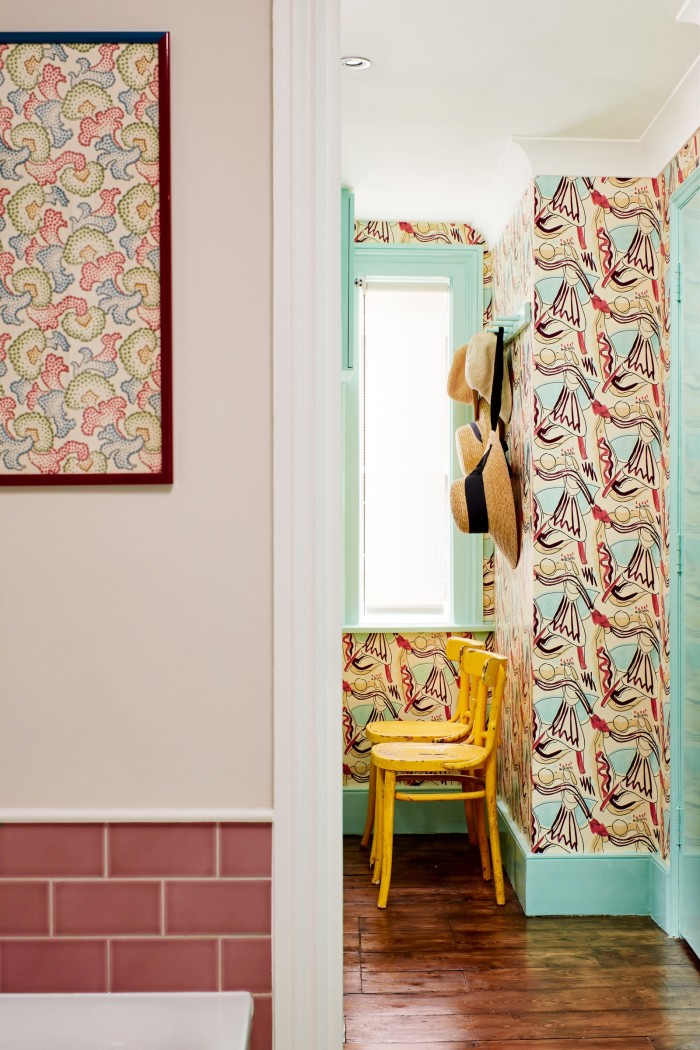
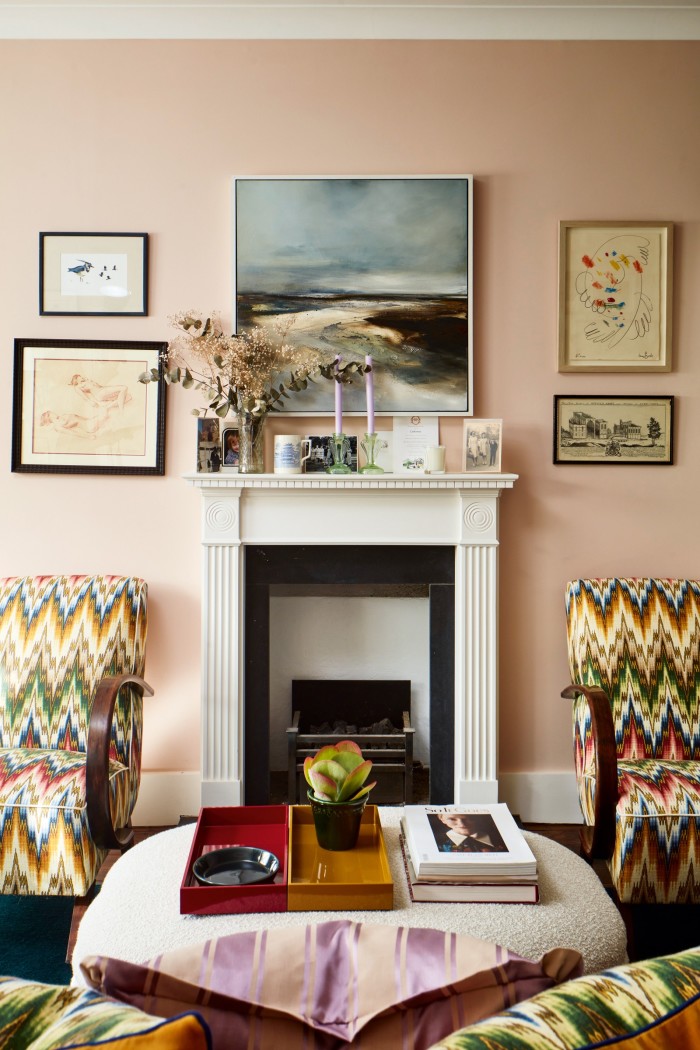
More spectacular wallpaper, a dancing figure motif from Whiteworks’ Jet collection, features in the entrance hall, its bright aquamarine background echoed by the matching woodwork. In the pink-walled living room, an Andrew Martin sofa in a similar shade and a darker de Le Cuona velvet (the best on the market in Beckett’s opinion), takes centre stage like a rather fancy lady, beside a scalloped ottoman in cream Lelièvre boucle. On either side of a fireplace, two 1950s bentwood armchairs reupholstered in a dashing zig-zag fabric (Hawkeswood by Teyssier) contrast companionably with blinds in a pink-and-red Ottoline de Vries fan print.
Bold fabrics are a starting point for Beckett. In her bedroom, a floral design by the early Vienna modernist Josef Frank covers the headboard and creates the focus. “It’s the wow factor that I like – when someone comes round and thinks it’s amazing,” she says. “When you’re a bit braver with your interior, it usually pays off.”
“A bit braver” perfectly encapsulates the new aesthetic among designers – and homeowners – in which carefree mish-mash interiors mix traditional furniture, vibrant colours and, well, a lot of everything else: wall hangings, patterned and tactile textiles, decorative objets from different eras and countries, vintage rugs and glossy painted woodwork, all coalescing in a spirit of warmth and comfort. There’s a homeliness about these interiors, an old-fashioned grandmotherliness, even. “I do have lamps from my granny, so I can see that element,” says Beckett, laughing. “But it’s chic granny.”
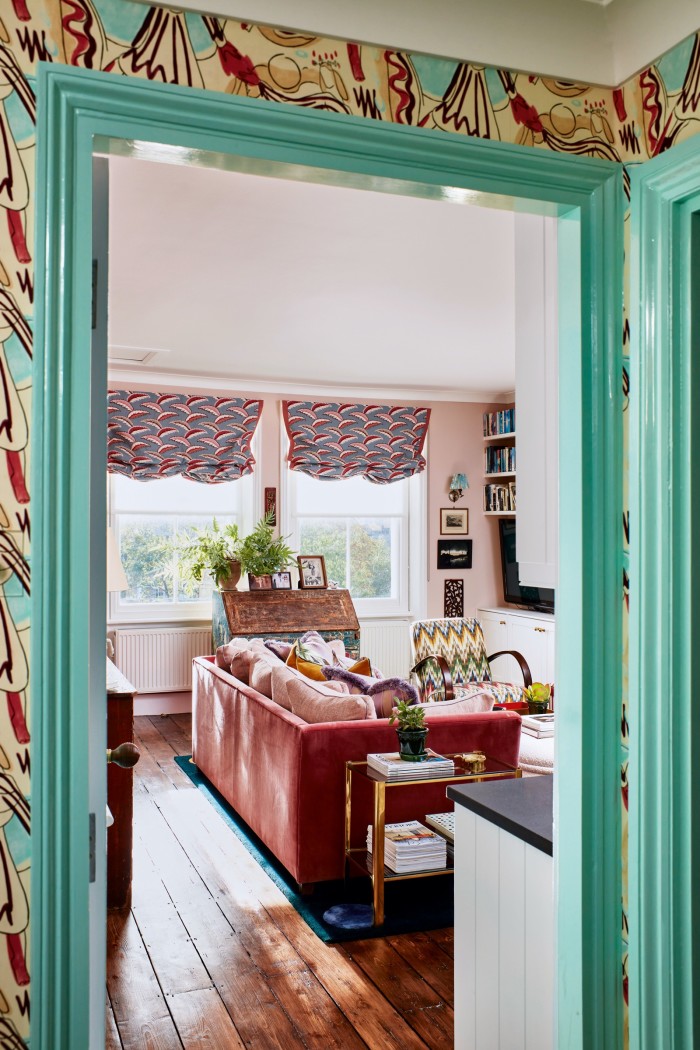
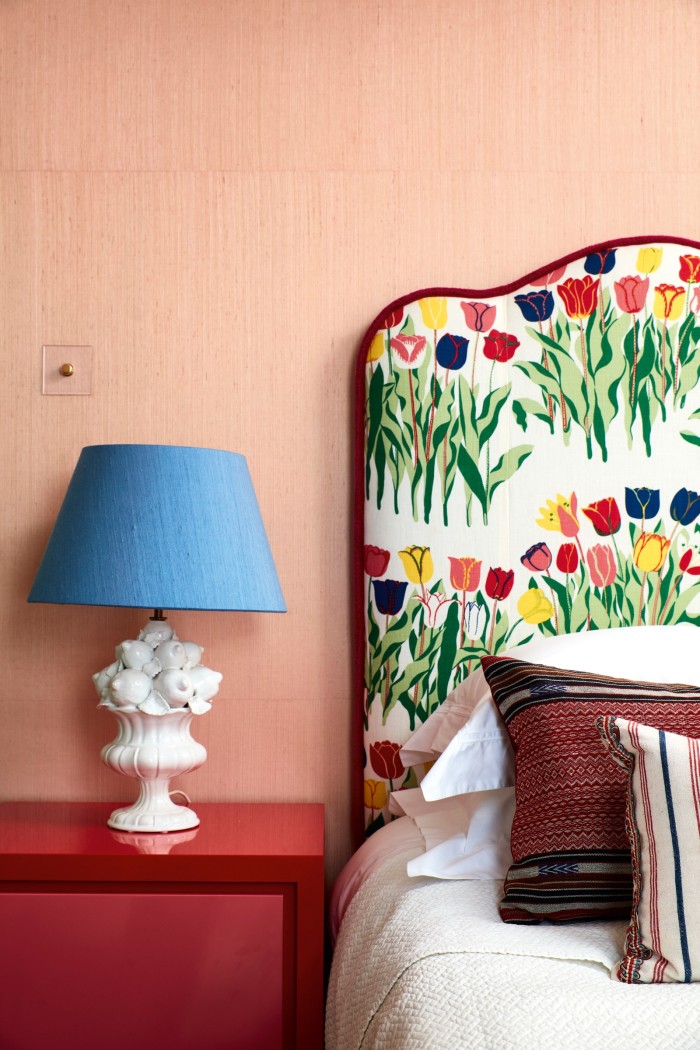
What the aesthetic very much doesn’t adhere to are the sharp corners and neutral colourings of minimalism, which dominated the most recent era of interior design. The look is about celebrating much-loved pieces that spark joy (not filing them away in the hallway cupboard), encouraging the gathering of things and pooh-poohing the matchy-matchy. You can often find within these homes a return to the softness of the traditionally influenced interior decor favoured in the 1980s, with cloth-covered side tables, pretty flouncy lampshades and covered headboards. Geometric lines are thrown out in favour of feminine curves, scalloped edges and nature-inspired shapes.
There’s an immense amount of practicality in this way of decorating, where comfort comes first – every corner is lit with a lamp, every drink has a place to rest. “It’s very forgiving, isn’t it?” says London-based homeware designer and interiors consultant Matilda Goad, who was at the forefront of this trend in 2016 when she launched her bestselling scalloped raffia lampshades. Her most recent product is a pleated brass lampshade that plays on the fabric and paper designs of the 1980s that have recently come back into favour. “Having very stark, minimalist rooms is amazing and I respect that aesthetic, but the way I actually live – having a mix of prints and a few different chairs gathered together – means you can disguise mess,” she adds. “Mess can look like part of the scene. But you can also be more confident with your choices because the boundaries are looser.”
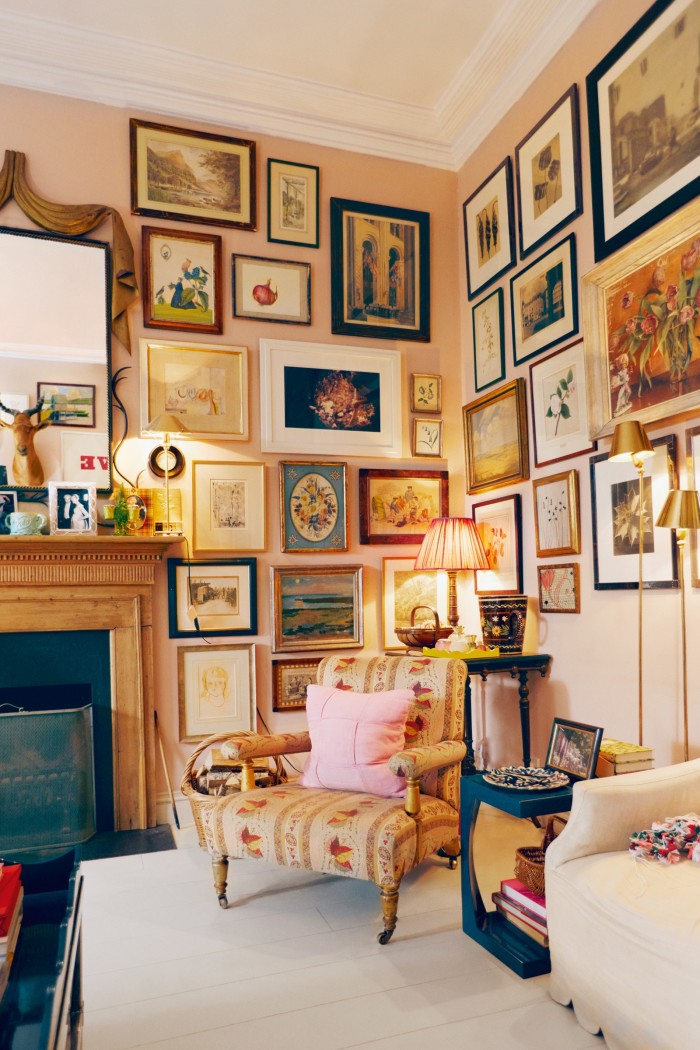
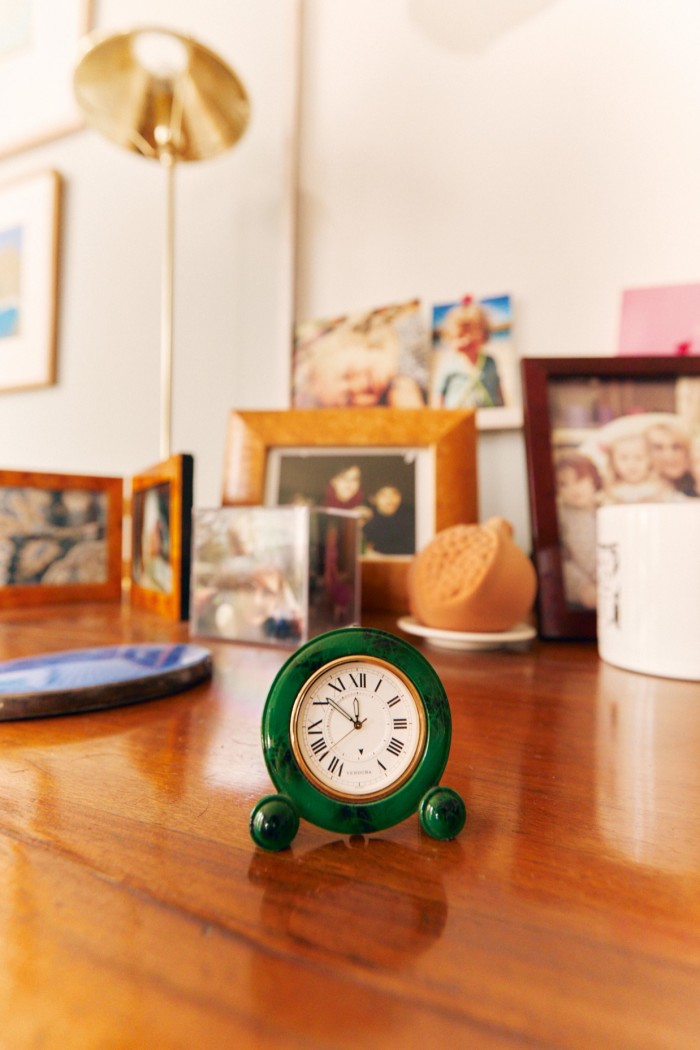
Interior designer Rita Konig, daughter of pattern queen Nina Campbell, has a similar loose style, and pre-pandemic held design workshops at her London apartment to show others how to get the look right. As seen in HTSI last month, her home’s considered decor looks effortless.
But this is not an aesthetic that is singularly British. One of the pioneers of the mismatched, love-worn look has been Copenhagen gallery owner Tina Seidenfaden Busck. A former Sotheby’s employee turned art and design consultant, Busck opened The Apartment in 2011 at the 18th-century building where she and her family live, intending to show clients how the pieces she sold might look in a domestic setting. It’s a gallery but not as you know it. “Lived-in” is the mood and the interiors are constantly evolving, the changing walls a backdrop to a carousel of design classics – vintage Hans Wegner Flag Halyard chairs, Muller Van Severen chaise longues and Murano glass chandeliers from the 1960s – alongside, say, African textiles, a Jessica Ogden quilt and an Italian manila rope doormat made by a fisherman, which Busck discovered while on holiday.
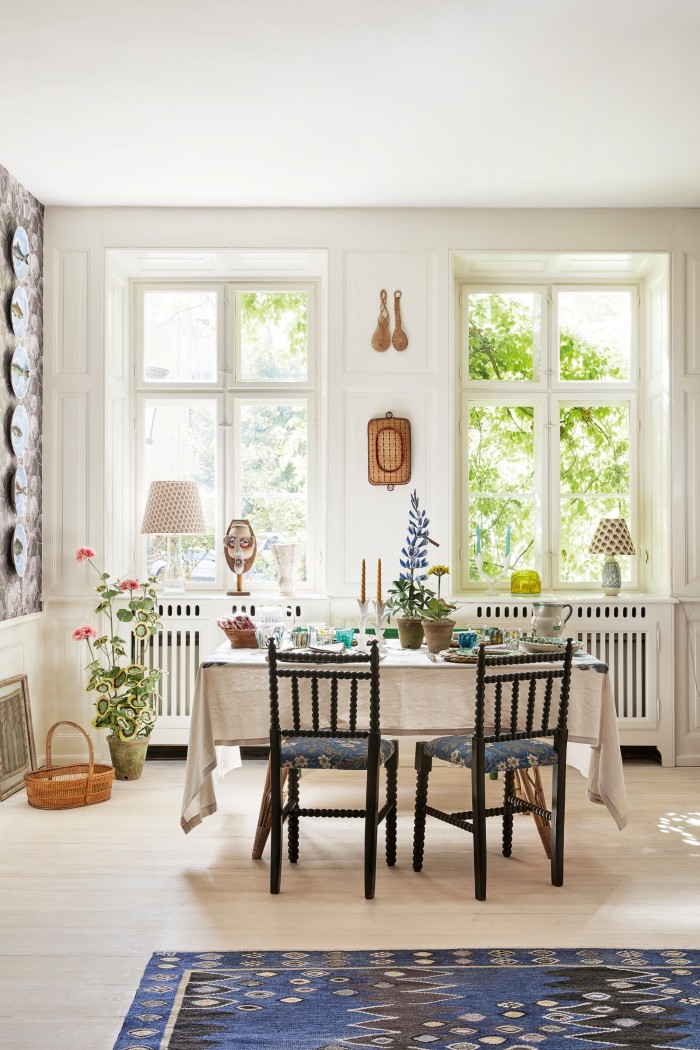
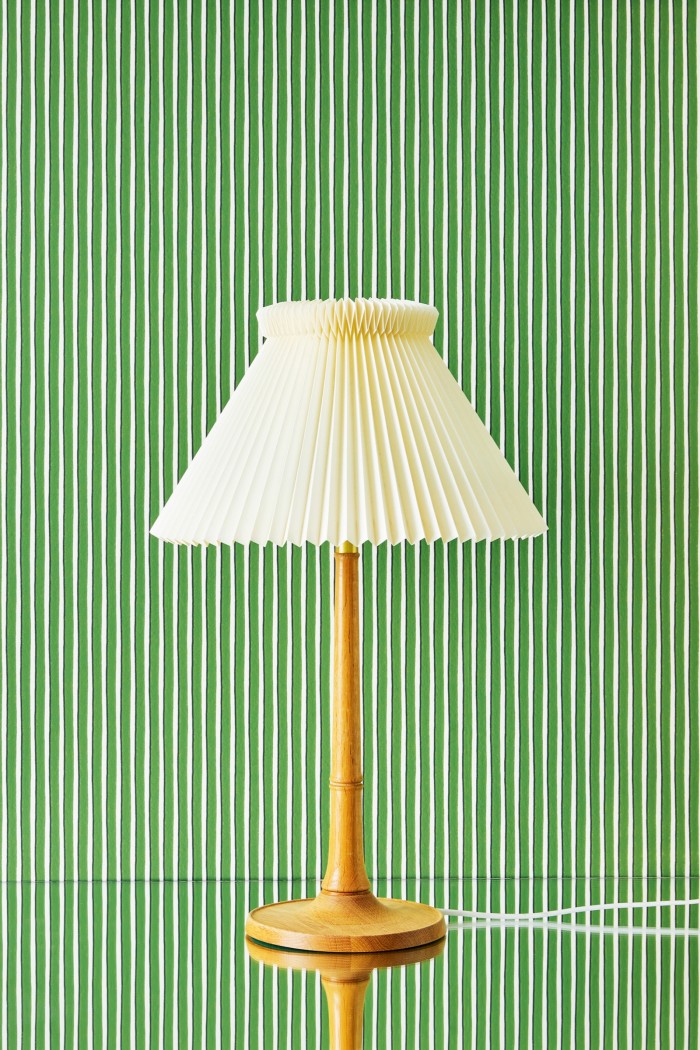
“Whatever I put into the gallery or the pop-up shop is always something I would live with,” says Busck. “If I don’t love it, I don’t buy it. When I look around my home there are so many things with different nationalities and dates of origin but somehow it all comes together, so there must be some thread between the things I’m attracted to.”
In 2019, Busck opened a walk-in pop-up shop in Copenhagen that proved so popular it remained in business for nine months rather than the projected three. A second pop-up in London is due to arrive later this year. She says that since then, The Apartment’s aesthetic has evolved. “There are so many more little objects,” she adds. “I liked the intimacy that was created in the shop. It made me realise that the space was too much of a gallery before. I’m not a minimalist; I’m probably more of a maximalist. I love that a home tells the story of the people who live there.” Covid-19, she says, has only underlined how essential it is to make our homes a place “where you are surrounded by things that you love, rather than those you put up with”.
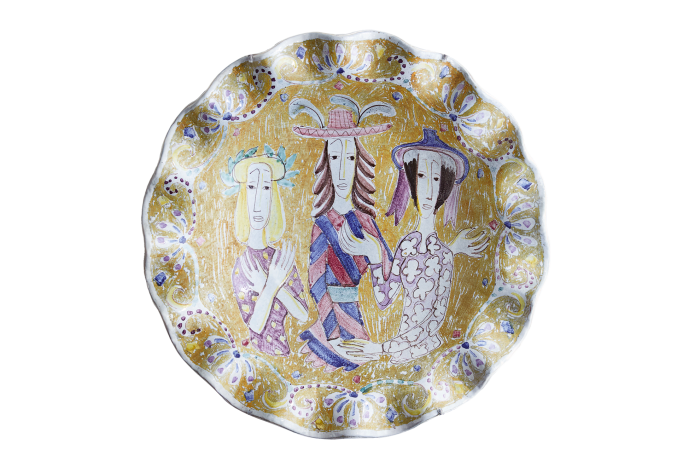
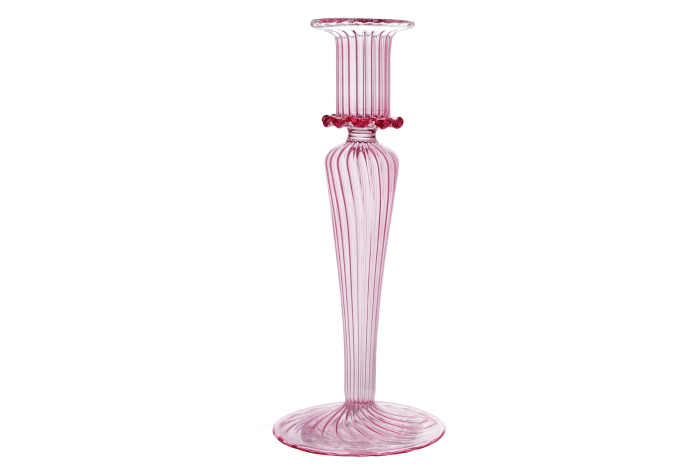
The Copenhagen pop-up was an Instagram sensation. A wall featuring the Josef Frank clover wallpaper designed for Svenskt Tenn appeared on countless feeds. Social-media platforms such as Instagram have become the shop window for a new generation of antique dealers, rug sellers and homeware brands stocking decorative and vintage products, which are exactly the sort of item that can lend a home that granny-chic look while offering a more sustainable way of decorating. Newcomers such as @tarnlondon and @foliechambre offer a curation of pre-owned furniture and decorative objects from a mish-mash of periods. Meanwhile Tat London, run by interiors stylist Charlie Porter, is a bigger player with 124,000 followers who are keenly tuned into her fortnightly stock updates – recent items on sale included a midcentury Swedish brass chandelier for £520 or a mixed lot of brown glazed ceramic bowls for £51. Societique, a dealer based in Morecambe, north Lancashire, is less well known but owner Howard Byrom sells striking antique Victorian and Georgian furniture and wild decorative objects such as a pair of flame-shaped fairground signs.
Sophie Warburton, a fashion journalist, says customers of her “affordable homewares” brand Host Home are keen to find pieces they won’t see anywhere else to scatter into their interior schemes. “Nabbing that one-off holds a lot of currency with shoppers at the moment,” she says. “Mixing the old with the new allows homes to feel more considered and less consumerist, while buys from different eras add layers of interest to a room. But they want items in near-perfect condition. It’s not about moth-ridden upholstery or serving dishes with chips and cracks.”
In that respect, shopping through these curated antiques sites certainly takes away some of that pain. Then again, after a year of being confined to our homes, the prospect of trawling through boxes at an antiques fair in a muddy field, or treasure-hunting in a dusty junk shop, in order to hunt down a touch of “this old thing” has perhaps never looked so appealing.
Comments